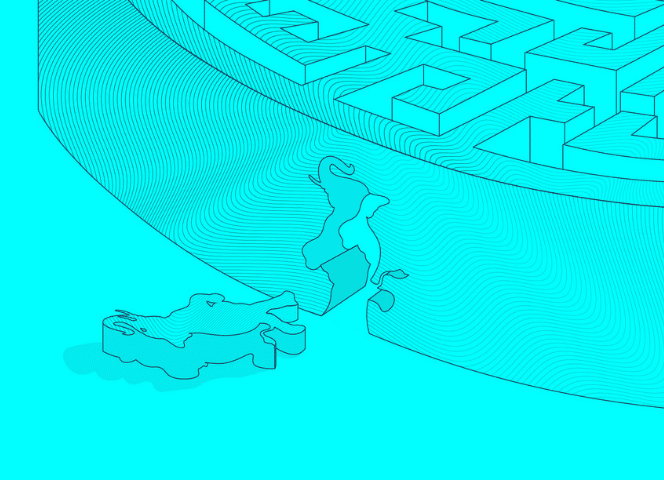In the ever-evolving landscape of the modern workplace, the HR professionals we work with grapple with a constant, pressing challenge: retaining top talent.
Most tell us that they’re aware that there’s a vast pool of talent already in their organisation and, with an effective internal mobility strategy, they’d be able to harness that talent and help them explore promotions, lateral roles or even entirely new career avenues within the same company.
The result?
Enhanced employee satisfaction, reduced turnover, and a treasure trove of cost savings.
But that’s easier said than done.
Despite its clear advantages, internal mobility often hits a wall, which can be frustrating for HR professionals and employees alike.
Despite the best intentions of HR, employees can find themselves navigating a maze, unaware of internal opportunities, unclear about potential career trajectories, or battling perceived biases within the company.
Now, we know there’s so much more to the puzzle, but we’ve seen time and time again that design is an underestimated tool in overcoming many of these challenges.
In this post we’ll talk about the power of design for internal mobility, as well as potential design solutions to supercharge retention.
How can design help improve internal mobility?
In a world where digital transformation is reshaping every area of our lives, HR is no exception.
Digital design, with its blend of aesthetics and functionality, can act as a compass guiding employees through their own individual career paths.
Here are some elements of design that can have a huge impact on the success of internal mobility initiatives:
User experience (UX) – the heartbeat of engagement
At the core of any successful digital platform is its user experience.
It’s not just about what the platform does, but how it makes the user feel.
A well-designed UX ensures that employees don’t just use the platform but genuinely engage with it.
It anticipates their needs, offers intuitive navigation, and provides timely feedback, making the journey of internal mobility smooth and enjoyable.
User Interface (UI) – The visual storyteller
While UX delves into the feel, UI focuses on the look. It’s the visual storyteller, presenting information in a manner that’s not just digestible but also compelling.
Through cohesive colour schemes, consistent typography, and interactive elements, a well-designed UI ensures that the platform is not just functional but also visually appealing.
It turns the often-daunting task of career progression into a visually guided, step-by-step narrative that the employee is a part of.
Adaptive design – meeting diverse needs
In today’s diverse workplace, one size doesn’t fit all.
Digital design recognises this, offering adaptive solutions tailored to various devices, roles, and user preferences.
Whether an employee is accessing a platform via a desktop at the office, a tablet at home, or a smartphone on the go, the experience remains seamless.
This adaptability ensures that every employee feels included and empowered.
Data-driven insights – personalising the journey
Modern digital design harnesses the power of data analytics. By understanding user behaviours, preferences, and feedback, platforms can offer personalised recommendations and insights.
Imagine an internal mobility platform that not only showcases job opportunities but also suggests roles based on an employee’s skills, aspirations, and past experiences.
It’s like having a personal career advisor embedded within the platform.
In essence, it’s all about merging form with function, creating platforms that are as delightful to use as they are effective.
It’s about recognising the unique challenges and aspirations of each employee and offering tools that resonate, engage, and empower.
In the quest for enhanced internal mobility, digital design is not just a tool – it’s a game-changer.
Design strategies and solutions for internal mobility
“OK, so I understand why design is important for HR broadly speaking, but what are some practical applications of design for my team that might inspire me?”
Internal mobility platforms
Imagine a platform, intuitive in design, where employees can effortlessly discover internal job openings or training opportunities tailored to their skills and aspirations. That’s the power of digital design – making complex processes feel seamless.
Interactive career pathways
Digital design can breathe life into static career pathways. Through interactive, visual maps, employees can chart out their growth within the company, understanding each step and what it takes to get there.
Feedback and engagement tools
Constructive feedback is the foundation of growth. By designing platforms that promote open dialogue, employees can gain insights into their strengths, understand areas of improvement, and even find mentors to guide them.
Gamification
Who said career planning can’t be fun? By weaving in elements of gamification (applying typical elements of game playing), employees can engage in their career development in a more interactive and rewarding manner.
Be it earning badges for skills acquired or unlocking new opportunities through challenges, gamification can make internal mobility an exciting journey.
Ready to break the mould?
Digital design has emerged as a powerful ally for HR professionals keen on breaking the mould and championing innovative retention strategies.
If that’s you, it may well be time to collaborate with the wizards of the design world.
This post was written by Electric Circus. They are an exhibitor on the HRTech247 Employee Engagement and Learning & Developement floors in the technology hall here






